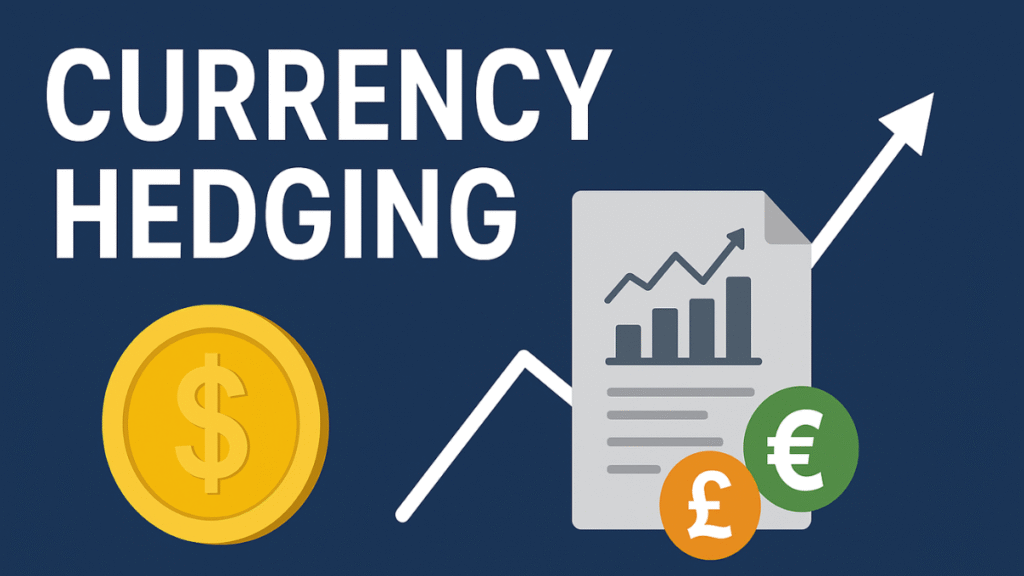Currency hedging is a financial strategy used by businesses, investors, and traders to protect themselves against the risk of exchange rate fluctuations. It involves using financial instruments—such as forward contracts, futures, and options—to lock in or offset the impact of potential currency price changes.
When companies operate internationally, issue invoices in foreign currencies, or invest in foreign assets, they are exposed to currency risk. Currency hedging helps stabilize cash flows, protect profit margins, and reduce uncertainty caused by volatile exchange rates.
Why Currency Hedging Matters
Foreign exchange rates can move sharply due to market sentiment, economic data, interest rate changes, or geopolitical events. For businesses and investors, these movements can:
- Increase or decrease the value of payments or receipts
- Affect earnings and profitability
- Create budgeting and forecasting challenges
Currency hedging exists to minimize these risks not to generate profit, but to ensure financial stability.
How Currency Hedging Works
Currency hedging works by taking an opposite position to a current or expected foreign currency exposure. The goal is to offset potential losses if the exchange rate moves unfavorably.
Basic Process
- Identify exposure
A business or investor determines how much foreign currency they expect to receive or pay. - Choose a hedging instrument
They select a suitable tool—forward contract, options, futures, or swaps. - Lock in or protect the exchange rate
The contract ensures the exchange rate is fixed or protected within a range. - Settle the transaction
When payment or investment settlement occurs, the hedge offsets currency losses if the market moves unfavorably.
Example of Currency Hedging
Scenario:
A Kenyan importer buys equipment worth $100,000 but will pay in 90 days. The current USD/KES rate is 130.
- If the shilling weakens to 140, the importer will pay 14,000,000 KES instead of 13,000,000 KES.
- To avoid this risk, the importer enters into a forward contract to lock the rate at 131 for 90 days.
Outcome:
No matter the market rate after 90 days, they will pay exactly 13,100,000 KES. The hedge protects against rising costs.
Common Currency Hedging Instruments
1. Forward Contracts
A private agreement between two parties to buy or sell a currency at a predetermined rate on a future date.
- Flexible and customizable
- Commonly used by importers and exporters
2. Currency Futures
Standardized contracts traded on exchanges to exchange currencies at a specified price and date.
- Highly regulated
- Suitable for traders and institutions
3. Options
Contracts that give the right—but not the obligation—to buy or sell a currency at a set price before a specific date.
- Useful for uncertain transactions
- Protects downside risk while allowing upside gains
4. Currency Swaps
Agreements to exchange currencies and interest payments for a set period.
- Used by institutions with long-term exposure
Who Uses Currency Hedging?
Businesses (Importers & Exporters)
Protect profit margins and stabilize cash flows.
Multinational Corporations
Manage earnings exposure across different countries.
Investors & Fund Managers
Protect foreign investments against currency losses.
Forex Traders
Use hedging strategies to reduce directional market risk.
Benefits of Currency Hedging
- Predictable cash flows – improves budgeting and planning
- Protects profit margins – avoids unexpected losses
- Reduces volatility – stabilizes financial performance
- Enhances competitiveness – firms can price products confidently
Limitations and Risks
While useful, currency hedging is not perfect:
- Cost of hedging – contracts may require fees, margins, or option premiums
- No guarantee of profit – hedging offsets losses but also limits gains
- Requires expertise – inappropriate hedging can increase risk instead of reducing it
- Not always precise – mismatch between exposure and hedge may result in partial protection
Currency Hedging in Investing
Global investors often face two types of risk:
- Asset price risk – movement in the value of the investment
- Currency risk – movement in the exchange rate
Example:
A Kenyan investor buys a U.S. stock. If the stock rises 10% but the dollar falls 10% against the shilling, the investor earns 0% return in local currency.
To avoid this, many funds use hedged share classes or hedge with forward contracts.
Types of Currency Hedging Strategies
Passive Hedging
Automatically hedges a fixed proportion of exposure, regardless of market conditions.
Active Hedging
Adjusts hedge positions based on currency outlook and market trends.
Natural Hedging
Uses business strategies—such as matching revenue and expenses in the same currency—to reduce exposure without financial contracts.
Real-World Application Scenarios
Scenario | Hedging Goal |
Importer fears rising USD costs | Lock in USD/KES exchange rate |
Exporter expects weak Euro | Protect revenue value |
Investor holds foreign assets | Protect returns from FX losses |
Airline buying fuel in USD | Hedge dollar exposure |
Is Hedging Always Necessary?
Not always. Some firms and investors accept currency exposure because:
- They expect favorable exchange movements
- Hedging costs outweigh benefits
- They have short-term or minimal exposure
A good hedging strategy requires balancing risk tolerance and hedging cost.
Frequently Asked Questions (FAQs) About Currency Hedging
1. Is currency hedging the same as currency trading?
No. Hedging reduces risk. Trading seeks profit from price movements.
2. Can individuals use currency hedging?
Yes. Forex traders and international investors frequently hedge their exposure.
3. Does hedging eliminate all risk?
No. It reduces currency risk but may introduce costs or imperfect protection.
4. What happens if the exchange rate moves in my favor after hedging?
You will not benefit from the favorable move—your hedge locks in the rate.
5. Is currency hedging expensive?
It can be, depending on the instrument used, but it is often cheaper than suffering an unexpected exchange loss.
Conclusion
Currency hedging is a crucial financial strategy that protects businesses, traders, and investors from the uncertainty of exchange rate movements. While it does not generate profits directly, it provides stability, safeguards earnings, and allows organizations to operate confidently in global markets.
Well-managed hedging means planning, evaluating costs, and choosing the right tools making it an essential skill for anyone dealing with foreign currencies.
